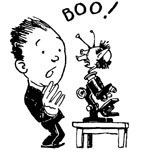
New Names for Old Things
THOMAS STORCK REPLIES
Were any of us twenty-first-century Catholics to be transported back in time to an earlier era of ecclesiastical history, we would find much that would surprise and probably even perplex and trouble us about the Church. The further back in time we were carried, the greater the surprise would be. In her outward and visible features, in the concrete ways that her faith and practice are manifested at various times and places, there is indeed considerable change perceptible in the Church; nevertheless, the essentials are always what they were on the day of Pentecost. The many outward changes do not, and cannot, alter the essentials.
In the lifetimes of many Catholics today, however, an amount of change unusual in Church history was condensed into ten or so brief years, roughly 1965 to 1975, during which not only was the liturgy of the Latin Church altered beyond what anyone even as late as 1965 would have believed possible, but the daily lived experience of being a Catholic in like manner also changed. Along with the traditional form of the liturgy, rules for fasting, time-honored methods of calculating indulgences, and methods of catechesis all vanished in a few years. As a result, the pre-1965 Catholic subculture, in which, by and large, both clergy and laity were consciously oriented toward man’s supernatural end, toward avoidance of sin and attainment of virtue, and took seriously the Church’s teachings on faith and morals, changed into a subculture that no longer adhered with any strictness to Catholic faith and morals, that no longer regarded orthodoxy in doctrine or fidelity in morals as the sine qua non of the serious Catholic. But above and beyond all the individual instances of changed practice or changed emphasis, there was a more subtle but more important change in the overall orientation of the Catholic subculture: the communal Catholic way of perceiving the world in large measure disappeared. Although the Catholic subculture in the U.S. had long since made compromises with the dominant Protestant culture, the everyday lives of most Catholics prior to 1965 in great measure accorded with the following description given by Peter Berger in his book The Sacred Canopy: “The Catholic lives in a world in which the sacred is mediated to him through a variety of channels — the sacraments of the church, the intercession of the saints, the recurring eruption of the ‘supernatural’ in miracles — a vast continuity of being between the seen and the unseen.”
Of course, the teachings of the Church still support such an approach to life, and many Catholics in their own lives and with their own families work to keep it alive. But the actuality of life in the Catholic subculture in great measure ceased to do so after 1965. Up until that time, you could assume that almost any Catholic you met would share the same beliefs and the same orientation toward life as you did, even if he did not live up to the demands of the faith. By 1975, however, a Catholic might believe nearly anything — or nothing.
Of the mass of individual changes in Catholic life that occurred during this time, some were authorized by the highest authorities in the Church; some were not. Needless to say, not all of even the authorized changes were wise. But wise or not, they have created considerable confusion. Those who remember the pre-1965 era, and who do not have sufficient knowledge of theology and Church history to sort all this out, are apt to become confused and have difficulty making sense of what happened and of the state of the Church today. It is easy to embrace everything new or reject everything new. It is much harder to make distinctions between beneficial and harmful innovations, and even more so between new things and new names for old things.
You May Also Enjoy
Unlike the ideologies of both socialism and capitalism, the Church promotes a society in which all of life functions as a harmonious whole leading to Heaven.
We are controlled by numerical systems run amok — creating lists and statistics, SAT scores and Nielsen ratings, Gallup and Harris polls, and the fearsome “bottom line.”
This Faith has three basic dogmas: the primacy of desire, the creative energy of competition, and “nonjudgmentalism.”

